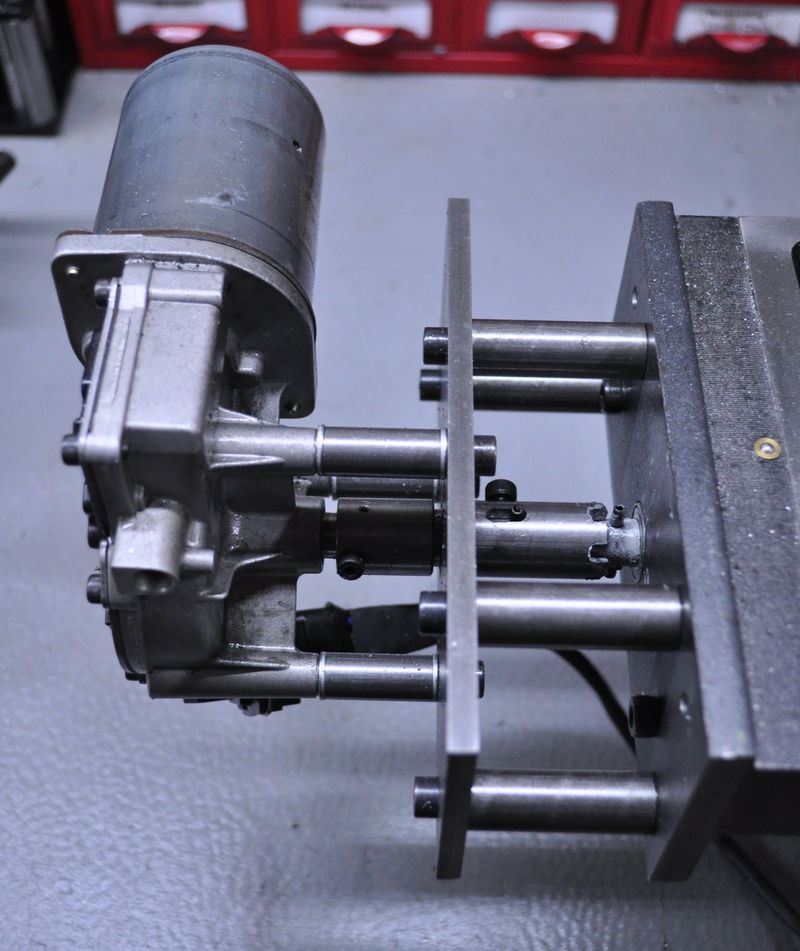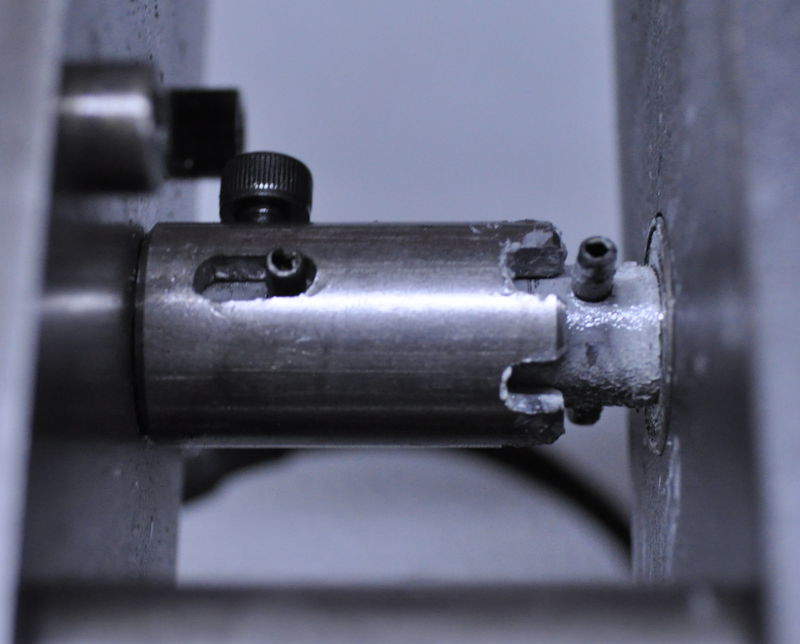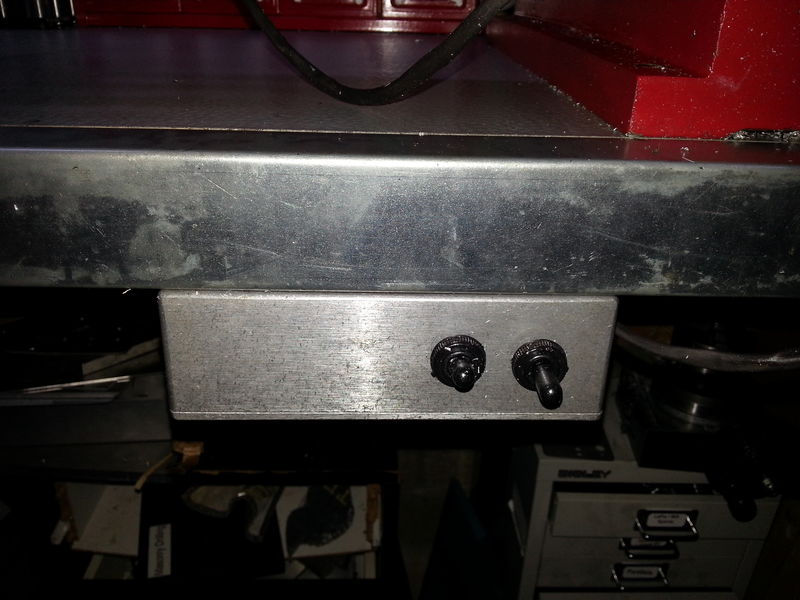Powered X-Axis Feed
My X-Axis power feed is made from a Volvo S60 front windscreen wiper motor that I bought on ebay for £10. As you would expect for a car component, it runs from a 12 V power supply. I haven't implemented a variable speed drive for this: I just use the fact it is a windscreen wiper motor and is therefore designed to have two speeds.
It is a fairly slow power feed and, while it is brilliant for taking very smooth cuts with a fly cutter, it isn't much use for quickly getting from one end of the table travel to the other. It also gets fairly warm if used for relatively deep cuts for a long time. However, as one of the first modifications I've made to the mill, I'm very happy with it and it has helped with a lot of jobs already. At some point I may replace it with a faster, more powerful motor controlled with a variable speed drive, but that's an exercise for another day!
The coupling is very simple. I extended the motor shaft using a sleeve that is cross-drilled for an M4 cap screw to hold the extended sleeve onto the motor shaft (this can be seen in between the motor and the plate on the picture at the top of this page). This extension also has a roll-pin all the way through and the roll-pin engages in a slot in a sliding piece that can move left and right to engage with another roll-pin inserted in the leadscrew extension. The sliding piece also has an M5 cap screw to stop it sliding on its own, but I rarely use this. The leadscrew extension is a plain 12 mm round bar with flats machined on one end to engage with the cut-out in the end of the leadscrew. To keep the leadscrew extension and motor shaft extension in line, they both run in bearings in two pieces of steel plate used to mount the motor and there is a greased hardened ball that fits into centres that are drilled into the ends of each extension piece. I've no idea whether this ball is necessary or helps, but I figured it couldn't hurt!
The drive electronics are currently extremely simple: two switches and an off-the-shelf 12 V power supply that I bought from ebay for another £10. One of the switches is used to select fast or slow mode (or should that be slow or slower mode?!); the other (three-way) switch selects direction or off.
This website is free and ad-free, but costs me money to run. If you'd like to support this site, please consider making a small donation or sending me a message to let me know what you liked or found useful.



